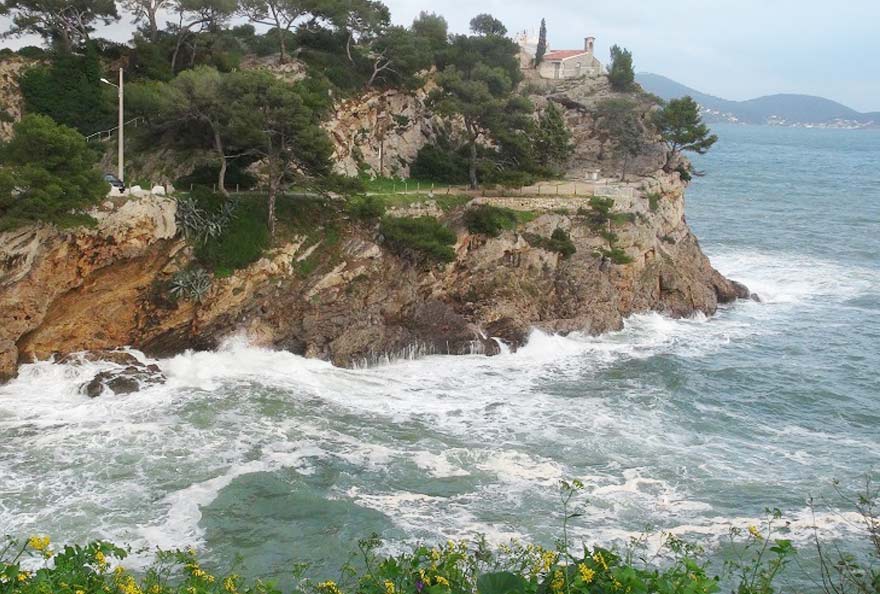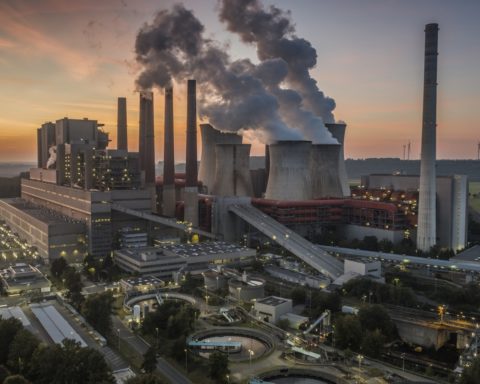Dans le cadre de la Conférence nationale sur la Transition écologique de la mer et des océans, pour la croissance bleue et le climat, un appel à idées auprès de la société civile pour « imaginez le littoral de demain » a été lancé par le ministère de l’Environnement.
Il s’agit d’une action de sensibilisation face aux enjeux de l’évolution du littoral dans la perspective notamment de la hausse du niveau de la mer et du recul du trait de côte dans le cadre de la politique d’adaptation face au changement climatique. Cette initiative permet la mobilisation de la société civile afin de recueillir des contributions prospectives susceptibles de nourrir les réflexions sur la gestion et l’aménagement des territoires littoraux, notamment par des solutions alternatives à des actions de « lutte contre la mer ». Présentation des projets le jeudi 27 octobre.
Pour cette première édition lancée en avril 2016 et qui se clôt en octobre, le ministère de l’environnement, de l’énergie et de la mer a proposé d’imaginer le littoral dont nous rêvons dans un demi-siècle, en 2070, loin des luttes contre la mer et les inondations, un littoral vivant et apaisé, sauvage ou peuplé, un espace à partager entre nous et la nature, un territoire entre terre et mer où concilier habitats, usages, biodiversité, activités… Un littoral commun, durable mais pas immuable !
Élèves, étudiants, associations, collectivités, particuliers, artistes, écrivains, industriels, artisans… tout citoyen intéressé par le littoral, a été invité à imaginer tout ou partie de notre littoral idéal et à nous projeter pour « réenchanter » cet espace entre terre et mer.
Le Jeudi 27 octobre est proposée l’exposition des 30 projets concluant ce 1er appel à idées. Une journée ponctuée par des tables rondes et ateliers participatifs. Archéologues, historiens de l’architecture balnéaire, paysagistes, architectes, créateurs, élus seront aux côtés des donneurs d’idées et du public pour une journée d’échanges autour de la thématique du littoral de demain.
Les écosystèmes littoraux sont les plus dynamiques au monde. Le réchauffement climatique nous le rappelle avec la hausse du niveau de la mer, les impacts de l’érosion littorale et la multiplication des submersions marines.
Lieu ancestral voué à la pêche et au commerce maritime, défendu par des forts militaires, le littoral a été de plus en plus habité, avec un attrait croissant pour les activités balnéaires et les couchers de soleil. Les fronts de mer se sont multipliés, favorisés par l’arrivée du chemin de fer.
Face au tourisme de masse, il y a 40 ans, le conservatoire du littoral a été créé. Dix ans plus tard, la loi littorale exprimait l’enjeu d’un certain équilibre entre espaces naturels et espaces urbanisés. Aujourd’hui, l’exceptionnelle biodiversité marine et la richesse des milieux naturels côtiers en font un territoire unique.
Plutôt que de lutter contre la mer, parfois dans l’urgence, il nous faut accompagner l’évolution du littoral et nous adapter. Il faut accepter que certains territoires soient parfois occupés par la mer, nous organiser en conséquence et à long terme, inventer de nouvelles façons de vivre dans ces espaces entre terre et mer, mieux les partager en les préservant pour profiter de leurs bienfaits. Cela suppose de changer nos points de vue, de modifier nos habitudes, de réinventer nos habitats, nos villes littorales et nos stations balnéaires, notre agriculture, nos activités, nos modèles spatiaux, économiques et culturels.
… selon vents et marées
Ici, des dunes, là des plages de sable, ailleurs des falaises crayeuses, des rochers… Le littoral est en mouvement. Sans cesse et depuis toujours. Même si vous ne l’avez pas forcément perçu. En France, près d’un quart du littoral recule du fait de l’érosion côtière. C’est un phénomène naturel : au gré des courants, des vagues, des marées, des tempêtes ou des cyclones, la mer transporte les sédiments (1), fait bouger les dunes, les mangroves et creuse les falaises. Le sable va et vient suivant les saisons, parfois la mer l’emmène très loin. Par endroits, le trait de côte2 recule de quelques mètres par an.
… selon le changement climatique
Même si cela est difficile à évaluer, l’érosion littorale s’aggrave, à peu près partout dans le monde avec la hausse du niveau de la mer, une des principales conséquences du changement climatique : les océans, plus chauds, se dilatent, occupant plus de volume ; les glaciers et les calottes polaires fondent et s’écoulent dans l’océan. Cela augmente aussi les risques de submersion marine avec parfois des conséquences dramatiques comme lors de la tempête Xynthia en 2010. Au cours des trois derniers millénaires, la mer est montée d’environ 6 cm par siècle. Entre 1993 et 2010, elle est montée d’environ 7 cm, soit pratiquement autant qu’en un siècle.
… selon nos aménagements
Nous accentuons aussi le problème en construisant des ports, en consommant le sable pour nos constructions, en élevant des barrages sur les rivières qui bloquent la circulation des sédiments et en aménageant toujours plus le littoral tant convoité : en période touristique, il peut accueillir jusqu’à 14 millions de personnes alors qu’il ne représente que 4 % du territoire. Et pour poursuivre cette conquête du littoral, urbaniser toujours plus, nous construisons des digues, des ouvrages côtiers en espérant maîtriser la nature. Cependant, face aux aléas naturels, ces protections souvent peu effi caces à terme sont souvent à réparer ou détruites.
La mer pourrait encore monter d’un mètre, le vent souffler plus fortement et de façon plus intense.
Anticiper
Nous savons pertinemment que là où on lutte aujourd’hui, la mer prendra le dessus demain. En 2012, le gouvernement français a lancé une stratégie nationale afin d’anticiper au mieux les effets de l’érosion littorale en incitant les collectivités à gérer leur littoral de façon raisonnée : réfléchir à une relocalisation (3) des usages, des activités et des biens menacés, imaginer comment recomposer spatialement leurs territoires en évaluant tous les impacts, réinventer un littoral partagé.
Préserver
Les écosystèmes sont les premières protections des côtes : les mangroves, les récifs coralliens, celles des côtes tropicales, les marais et zones humides, celles des côtes basses, les dunes, celles des côtes sableuses. Ces protections sont fragiles mais très efficaces. Comment les préserver et les restaurer ? Sauvegarder ces milieux est un défi pour lutter contre le changement climatique, et une opportunitépour embellir les paysages littoraux, augmenter l’attraction et les ressources économiques des territoires, et contenter des touristes et des enfants.
Prendre du recul
Certains de ces espaces côtiers, comme les côtes basses, sont susceptibles d’être inondés lors de fortes tempêtes, surtout quand ils sont en dessous du niveau de la mer comme certains polders (4). D’autres côtes sont sujettes à l’érosion des falaises Les territoires doivent se recomposer et se renouveler. Les réponses sont évidemment bien différentes suivant les moyens, les configurations territoriales et les enjeux. Il n’y a pas de recette miracle ! Il faut expérimenter.
Notre défi est d’accompagner les changements de modèle spatial, culturel et économique nécessaires sur les territoires littoraux. Le littoral est notre patrimoine commun, au coeur de nombreux enjeux durables. Il nous assure protection, subsistance, équilibre, ressources. Comment s’adapter pour que, dans 50 ans, il soit préservé et renouvelé ? Comment s’assurer que nous saurons y vivre en harmonie avec la nature et la mer ?
Tout est possible !
Utiliser la force motrice littorale : Comment produire de l’énergie avec le vent et les marées ? Comment en tirer parti et rendre ces territoires autonomes, acteurs de la transition énergétique ?
Inventer la future station balnéaire : Les activités balnéaires de 2070 seront probablement bien différentes de celles d’aujourd’hui. Si la thalassothérapie ou la randonnée sur les sentiers côtiers n’ont cessé de se développer ces 50 dernières années, qui aurait imaginé l’essor si rapide du paddle, du kite surf, du jet ski, du char à voile ? À quoi ressembleront les campings ? Les fronts de mer et les marinas seront-ils encore de ce siècle ?
Construire la ville résiliente : Quelle urbanisation à long terme ? Osons recomposer spatialement le littoral pour mieux se protéger. Comment ? Le changement climatique ? Où s’installer à l’abri avec quels moyens de transport ? Comment construire aujourd’hui sur un espace soumis au recul du trait de côte ? Comment adapter les quartiers, l’architecture et le patrimoine monumental face aux risques littoraux ? Maisons flottantes, nomades, sur pilotis… la ville doit s’adapter à l’espace et au temps.
Imaginer le paysage de demain : Quels moyens trouver pour aider tout un chacun à se figurer la hausse du niveau marin et l’érosion côtière ? Comment représenter aujourd’hui sur le terrain le paysage du futur ? Les marqueurs sont parfois déjà là. L’Histoire peut nourrir la vision du futur. Les traces peuvent-elles faire enseignement pour les passants du littoral ? Comment prévoir la transformation paysagère et faire de la disparition et de l’évolution du trait de côte, un évènement de mémoire de l’histoire du site ? À l’inverse, que faut-il inventer pour pouvoir construire cette mémoire de demain et accepter l’inéluctable de façon apaisée ?
Mettre à profit les milieux salés : La hausse du niveau marin, les inondations des fleuves côtiers, doublés du renouveau d’une agriculture locale raisonnée et d’un développement de la permaculture peut transformer de façon durable et positive les espaces entre terre et mer où le sel va croissant. Les plaines littorales se maritimisent. Quelle agriculture, aquaculture, conchyliculture, algoculture ou simplement prés salés… ?
Participer à la croissance bleue par le développement d’une économie d’échanges : Favoriser les activités économiques locales comme les chantiers navals ou les activités maritimes tout en limitant leurs impacts ?
Améliorer les écosystèmes naturels : Comment améliorer ce précieux patrimoine naturel littoral, renaturer, reconstituer les dunes, replanter la végétation locale comme les mangroves, protéger les récifs coralliens ? Pour capter l’énergie marine et les submersions, les estuaires ou les plaines sont remis en eau, si besoin en construisant des digues en second rang ? Comment préserver les lieux d’hivernage et de reproduction des nombreuses espèces, notamment des poissons et oiseaux d’eau… ?
Le Jeudi 27 octobre est proposée l’exposition des 30 projets concluant ce premier appel à idées. Une journée ponctuée par des tables rondes et ateliers participatifs. Archéologues, historiens de l’architecture balnéaire, paysagistes, architectes, créateurs, élus seront aux côtés des donneurs d’idées et du public pour une journée d’échanges autour de la thématique du littoral de demain. Isabelle Autissier, navigatrice, écrivain, présidente du WWF, et marraine de l’opération sera présente.
S’abonner
Connexion
0 Commentaires
Inline Feedbacks
View all comments













